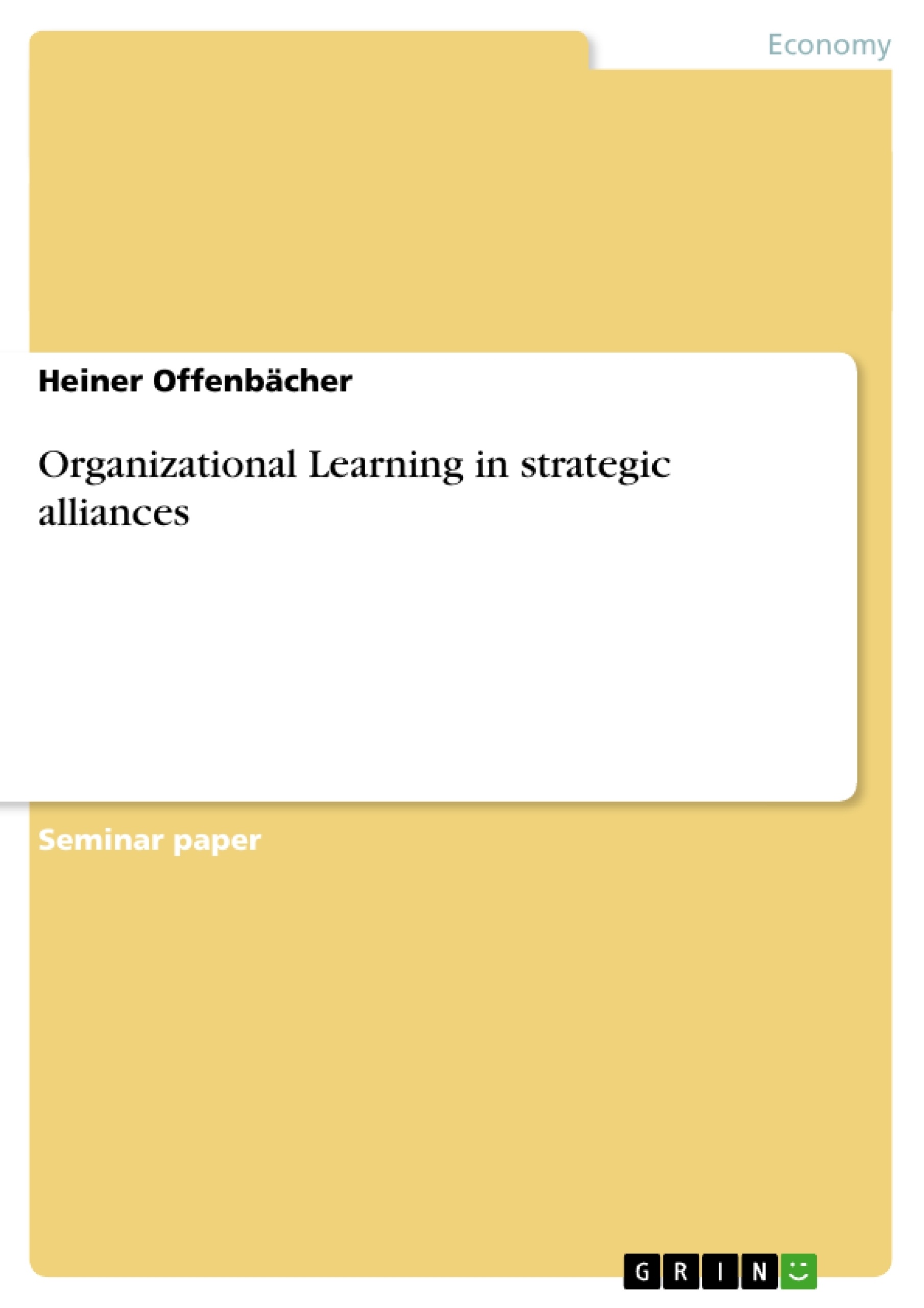Over the last decades business environment has undergone severe changes. Due to deregulation, fierce competition, and fundamental breakthroughs in science, industry structures have altered and become very complex and indeterminate.1Moreover, costs involved with product development and entrance to new markets have increased significantly. As firms from all over the globe are competing for the future, their fate is not so much determined by cash, but by intellectual energy: To succeed in the market place learning and acquiring new knowledge becomes increasingly important. Thus, companies need to be perceived as a portfolio of core competencies and value creating disciplines. But as these abilities are not distributed equally among firms, only a limited number can achieve this single-handedly. The great majority, though, needs a helping hand.
Firms can create new competitive advantages by orchestrating their resources. Noteworthy, “[…] a firm’s critical resources may also extend beyond firm boundaries.” “Alliances can be a vehicle for gaining access to new knowledge outside traditional organizational boundaries.” This knowledge allows companies to learn from their partners. As a matter of fact, strategic alliances are blossoming: The number of alliances between U.S. firms and partners from Europe, Asia and Latin America has been growing by 25% per year recently. Despite its importance and the richness of opportunities, many strategic learning alliances cannot meet their makers’ expectations. They fall behind in means of performance and valuable output. In an empiric study conducted by Hamel, a majority of interviewed alliance managers expressed disappointment about their alliances’ performance and Inkpen adds that the creation of a successful learning alliance environment is rather the exception than the rule.9Given these diverging and sometimes poor outcomes, this paper explores key factors that determine success of interorganizational learning in strategic alliances.
Inhaltsverzeichnis (Table of Contents)
- Introduction
- Problem definition
- Course of the analysis
- Theoretic background
- Strategic alliances
- Organizational learning
- Organizational learning in strategic alliances
- Learning intent
- Transparency
- Absorptive capacity and receptivity
- Organizational learning dilemma
- Conclusion and outlook
Zielsetzung und Themenschwerpunkte (Objectives and Key Themes)
This paper explores the key factors that determine the success of interorganizational learning in strategic alliances. It examines the challenges faced by companies seeking to gain competitive advantages through partnerships, highlighting the importance of knowledge acquisition and exchange within alliance structures. The paper also investigates the impact of learning intent, transparency, and absorptive capacity on the effectiveness of alliances. It explores the concept of the organizational learning dilemma and analyzes its implications for alliance performance.
- Interorganizational learning in strategic alliances
- Determinants of successful alliance learning
- Learning intent, transparency, and absorptive capacity
- Organizational learning dilemma
- Challenges and opportunities in alliance management
Zusammenfassung der Kapitel (Chapter Summaries)
- Introduction: The chapter introduces the research topic of interorganizational learning in strategic alliances, outlining the growing importance of alliances in a globalized business environment. It emphasizes the need for companies to acquire new knowledge and leverage their core competencies through partnerships. The chapter also sets the stage for the analysis by outlining the problem definition and the course of the paper.
- Theoretic background: This chapter provides a conceptual framework for the study by defining strategic alliances and organizational learning. It explores the various motivations for forming alliances, including knowledge exchange, resource sharing, and joint learning. The chapter also discusses different governance structures of alliances, such as non-equity alliances and equity-based joint ventures, and their impact on alliance dynamics.
- Organizational learning in strategic alliances: This chapter delves into the key determinants of successful learning in strategic alliances. It analyzes the roles of learning intent, transparency, and absorptive capacity in facilitating knowledge transfer and internalization. The chapter examines the interplay between these factors and how they contribute to the effectiveness of partnerships.
Schlüsselwörter (Keywords)
The key terms and concepts explored in this paper include strategic alliances, interorganizational learning, learning intent, transparency, absorptive capacity, organizational learning dilemma, knowledge acquisition, resource sharing, governance structures, equity alliances, non-equity alliances, joint ventures, and competitive advantage.
- Arbeit zitieren
- Heiner Offenbächer (Autor:in), 2005, Organizational Learning in strategic alliances, München, GRIN Verlag, https://www.grin.com/document/64176



